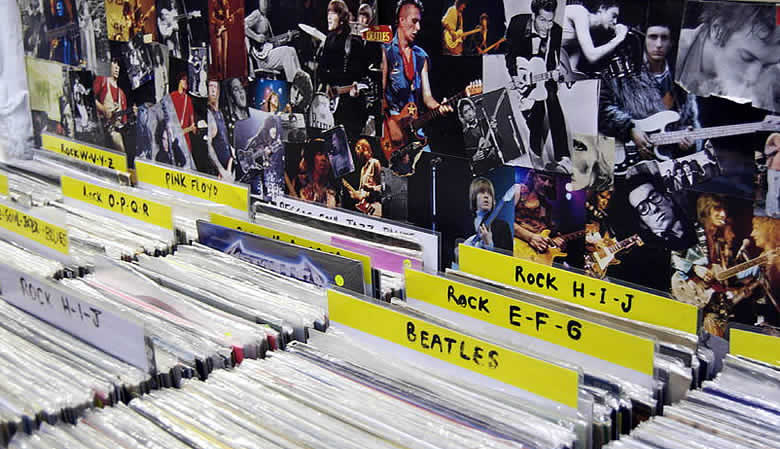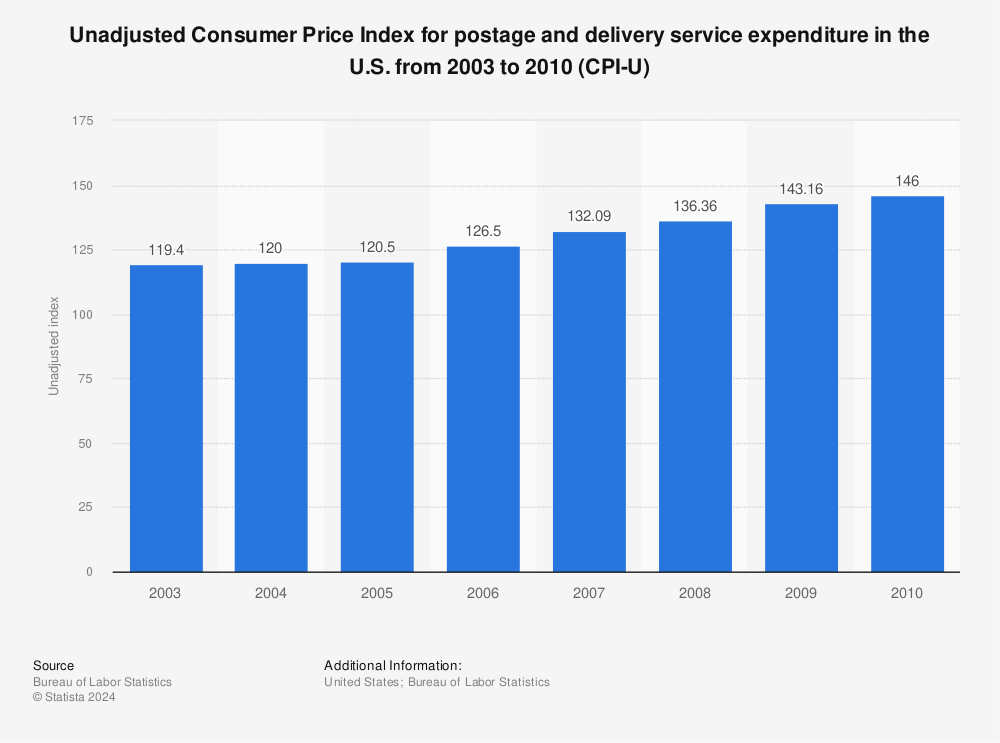This post is by Brennan Burns, Senior Relationship Manager at Monsoon Inc.
Media products – books, music, DVDs and video games – were some of the first products to be sold successfully online. It’s easy to forget that today’s 800lb gorilla of ecommerce, Amazon, built its business selling books then moved into other media products, before expanding to become “the everything store”.
A lot has changed in the media world in the twenty years since Amazon was founded. The digital revolution has caused turmoil, with innovative products and services like Spotify, Netflix and the Kindle hurting sales of physical products. A succession of new video formats – HD, 3D, 4K – has delighted technology enthusiasts but bewildered slower adopters. And industry associations have taken a hard line on piracy.
So digital media has seen most of the glamor, innovation and controversy in recent years. But outside of the limelight physical media is still going strong. Despite music being the first category to go digital, it wasn’t until 2014 that digital music sales grew to equal physical music sales. Revenues from paper books were up last year, but eBooks have hit a plateau. Then in areas like console video games, textbooks and used items, physical media still reigns supreme.
In this article I’ll take an in-depth look at selling physical media products online. I’ll talk about the kind of businesses who sell media and why people still buy it, current trends and challenges for media sellers, and the best sales channels.
Who sells media online?
There is a broad range of businesses selling media online, from one-person businesses to $100 million enterprises like Momox. Some started as traditional offline retailers, while others are pure-play online businesses. Here are the main categories we see.
Bricks-and-mortar retailers
Every kind of outlet is selling online, from independent bookstores to large chains. Having existing physical storage and a deep understanding of the market can be a significant advantage. Some sell online just to liquidate overstocked products that they can’t move through their stores, while others put their full catalog online. The foot traffic for even the largest store networks pales in comparison to the hundreds of millions of buyers on Amazon or eBay.

There are also more category-specific outlets branching out online such as college bookstores, music stores and video game stores. A lot of these businesses have gone through a tumultuous period, weathering the storm of digital publishing and eBooks. But the industry has settled down and businesses can once again predict their physical sales with reasonable accuracy, whether it’s in-store or online.
Niche independent stores, like antiquarian booksellers, can do well online as it provides access to a much larger audience. But sellers of popular mass-market books are those driving the highest sales volumes, despite direct competition from Amazon.
Non-profits
There are many non-profits, both in the US and the UK, that are selling online. These range from small non-profits like libraries, to international thrift-store chains that have a lot of excess media product they can sell online.
They’re often working with donated goods, and used media lends itself really well to being sold online. It’s just a matter of scanning the barcode and selecting the condition.
In the past thrift stores (charity shops) would simply put all donated goods out for sale in their stores. Now they have become more aware of online sellers swooping in and buying up their best items for pennies, so many have turned to selling online themselves. They get a better price for their products, but it has had an effect on the independent sellers who previously sourced a large part of their inventory from them.
Online entrepreneurs
We’ve seen a lot of sellers start out as part-time mom-and-pop businesses, or college students selling textbooks out of their dorm rooms. Some go on to become fully-fledged businesses and move into warehouses. There’s a strong entrepreneurial spirit within media sellers.
Most of them sell either just new products or just used products, but there are a few who do both. To sell new products, they will build distributor partnerships with some of the large wholesalers or maybe work with publishers to sell remainder stock. Getting a supply line is critical, and once they have it they’re going to foster those relationships and milk it for all its worth.
On the used side, there are folks who have fallen into it by chance then realized they could turn it into a business. Then there are sellers who have built large buying networks, or developed a hybrid model where they’ll place drop-boxes for used books in the community then donate a portion of their sales to charities. Another model is buyback programs, which offer store or website credit in exchange for used items. That gives people a way to get rid of their excess media easily and it’s better for the store than paying out cash.
Direct-to-consumer
Direct-to-consumer (D2C) is a big trend in many areas of ecommerce, but for media we don’t see many publishers or distributors starting to sell direct. The industry supply chain is well established and it would hurt the business model elsewhere if they try to cut out the middle man online.
Why do people still buy physical media?
When I started at Monsoon eight years ago, the digital age was already in full swing. People were saying that media sales were in permanent decline, and would disappear completely within a few years. But here we are eight years later, and we have a lot of sellers of physical media who are not only still around, but thriving.
There’s certainly been a lot of consolidation in the industry, and some sellers have gone out of business. But now we have found a new plateau, where both sides of the industry are relatively stable.
Why is that? Well, the digital revolution didn’t turn out to be an all-or-nothing deal to consumers. Many people love their Kindles, but few of them have become fervently anti-book – it’s just their preference to read eBooks. For other people, they would still rather have the physical product in hand – here’s some of the reasons why.
Longevity
With a physical product, people know they only have to buy it once then it’s theirs forever. They don’t have to worry about paying a subscription, which device it’s stored on, compatibility or having high-speed internet access. All of those are valid reasons for avoiding digital media, and enough to persuade some people to steer clear of it.
Collecting
There are many people who get satisfaction from having a collection of books, DVDs or Blu-rays on their shelves. It would not be remotely the same for them to only have an intangible and invisible digital collection.
Often collector’s editions of DVDs are packaged with a digital download as well, so buyers get the best of both worlds by purchasing the physical product – even if they watch the digital version and just keep the DVD for display.
Gifts
The gift market is a big deal for physical media. The technical challenges of making digital products giftable have not been addressed, and even if they were many consumers would not feel comfortable with giving or receiving a digital gift.
Media products can also be given special packaging or bonus content, increasing the gift appeal as well as the price.
Price
The pricing of digital versus physical media is often irrational to consumers. Digital media has a lower perceived value, but can be priced higher than the physical product – which sometimes comes with a free digital download!
Folks will also reason, “Well, rather than paying $1.29 for an iTunes download of a single song, I’ll pay four bucks to get the whole album on a physical disc and then just rip it.” They only have to wait for delivery, then take a little time to copy the songs off the CD.
Price is still king and will influence a lot of decisions. Some people will do comparison shopping and search on different marketplaces to find the best deal, which only really works with physical products. Others are loyal to Amazon Prime, making delivery fast and free and removing a key advantage of digital media.
Selection and availability
Physical products still offer the widest choice, which is hugely important for some students, enthusiasts and collectors. Many mainstream, popular or recent works are available digitally, but they are still a small proportion compared to the full range of books, CDs and DVDs that are available to buy. The upfront digitizing costs mean that many items outside the mainstream may never be available digitally.
Usability
This only tends to be a factor with books, and only in certain genres. We see it a lot with textbooks. Despite improving eReader technology, and the size and weight of books, some students prefer physical textbooks over digital editions. They simply find them easier to navigate, annotate and refer back to when they are in physical form.
It’s also a factor with how-to works such as recipe and DIY books. Physical books are still very popular in those categories.
Trends in selling media online
Here are the main trends that I see for selling physical media products online.
Profit margins declining for new audio and video
Profit margins for new DVDs, CDs and Blu-rays are getting worse each year. Competition is high and everybody is using a repricer, so prices are being driven down. Sellers operate on razor-thin margins, especially on the latest releases where they’re paying more of a premium to the distributors. For used products, sellers are typically buying their stock for a fraction of the selling price, so margins are better.
There are some niches with brighter prospects, such as vinyl. There is a resurgence of interest in retro products, and consumer interest in the sound quality that comes from vinyl versus a CD. Even new artists are putting out copies of their albums on vinyl now. It has something of a cult following and will probably grow a little each year. Prices and margins are better for vinyl than CDs and DVDs, but vinyl is more difficult to store, pack and ship.
Video game sales growing
Unlike most physical media categories, video game sales have been growing over time, particularly console games. It looks set to continue to expand. Digital downloads are gaining in popularity for PC games, through services like Steam, but do not seem to have impacted console game sales negatively – perhaps due to the uncompetitive pricing of console game downloads. As prices become more competitive this will cannibalize some physical product sales, but long-term I see it leveling off as it has for books.
One thing somewhat unique to video games is the storage capacity of consoles, which continues to grow each year. But games also improve and require more memory year after year as they become more advanced. For example, my Xbox One has 1 TB of storage capacity, but with a dozen games or so uploaded, it seems that the capacity is already nearing the limit.
Console storage limitations could be what pushes gamers to opt for digital versions of games in the cloud, but streaming services also face limitations based on internet bandwidth of the gamer. Urban markets with fiber optic or similar high-speed internet options could see faster digital adoption, but outlying areas would continue to opt for the physical product.
Opportunities remain in books
Despite intense competition, and Amazon’s dominance, third-party sellers can still do well selling books. Our sellers are seeing a strong market for textbooks and how-to genres such as DIY, for example.

The textbook industry has seen a lot of innovation, such as textbook rentals where you can buy a book online then return it for 50% or 75% of the original purchase price after the term is over. A lot of textbook sellers were concerned when this came about, and it did eat into the market a little. But again it’s reached a plateau and traditional sales are stable again. Often the market will grow organically anyway, as the economy and population grows and new niches of interest appear. Sellers need to follow trends carefully and get on the right side of niches as they wax and wane.
Amazon is not infallible
Amazon has 64% of the online market for printed books and is very aggressive on price, continually pushing publishers for higher discounts and contributions to marketing campaigns. They pass that on to consumers in the form of lower prices, growing their market share further.
But there is a vast selection of books available, and even Amazon can’t always keep up with demand. There’s always going to be opportunities for third-party sellers to make big sales when Amazon goes out of stock on an item.
Then there are books that Amazon doesn’t sell itself, sometimes because of disputes with publishers – those can also be great opportunities for third-party sellers. The marketplace is a great asset to Amazon in this way – they can make conservative buying decisions and know that sellers will fill the gaps so consumers are not disappointed.
Amazon is a huge force in book sales, but it doesn’t have a monopoly by any means. Some consumers just prefer to buy from other marketplaces, such as eBay or Half.com. There are even folks who have Amazon accounts but don’t like to buy from Amazon directly, only from third-party sellers.
So sellers can benefit by having a multi-channel strategy, and by competing on price with other marketplace sellers but not Amazon itself.
Used items still strong
People like to buy and sell things. This is particularly true of media products, because once they have been read, watched or played consumers have often finished with the item forever. Digital media can’t be resold, so price-conscious consumers are attracted to physical media knowing that it retains some value once they are done with it.
Besides textbooks, other technical and scholarly books are doing well on the used market such as nursing, biology, writing handbooks, and academic books. Although similar to textbooks, they are not strictly part of that field.
We may start to see an impact on the used market from on-demand printing. This is increasingly being used by traditional publishers, allowing them to have smaller initial print runs then gauge demand on the fly and print additional copies as sales increase.
This requires less capital up-front and gives publishers better control of their margins, allowing flexibility in pricing not previously available. But it could impact used sales. Less remainder copies will be available (since those are often a result of printing too many copies) meaning a shortage of supply but higher resale prices as a result.
What are the challenges of selling media products?
Media sellers typically operate high-volume, low-margin businesses. Many of the challenges of selling media come from the logistical difficulties of dealing with that scale efficiently.
Condition grading
The grading of used products is a major concern. I find that a lot of businesses, especially booksellers, get too attached to their items. They see a book and say, “Well, I know how much this is worth,” but the market might say something entirely different. Then they’ll spend a lot of time putting in detailed condition notes.
But when there’s a hundred other sellers with the same item and it’s selling for five dollars, they shouldn’t be spending more than a few seconds grading items.
Condition grading is subjective, so what a buyer thinks is an “excellent” book or a “like new” book may be quite different to what a seller thinks. Differences of opinion will affect feedback and ratings on the marketplaces.
We advise customers to always downgrade condition so the buyer is not disappointed – an item marked as “good” might really be “very good” or “like new”. The buyer will be ecstatic, and more inclined to leave positive feedback for that seller. Sellers who go in the other direction and over-grade items risk disappointing the customer and receiving negative feedback.
Being efficient with grading, and not adding detailed notes, is very important for high-volume sellers. It can be hard to let go, but with low margins the extra time spent to achieve very accurate grading can be more expensive than simply downgrading and using automated condition notes. Even if accurate grading seems to be worth the time, there will still be buyers who disagree with your assessment.
Catalog size
Sellers of new media products tend to have smaller SKU counts. They might update their inventory quarterly or even less frequently, focusing on the new hit products coming out each season.
Conversely, sellers of used media can have hundreds of thousands of items, or more. They often have a wide selection, and a long-tail business strategy where they accept just about anything that comes in. But having a huge catalog that grows larger day-by-day puts a big strain on the labor, storage and technology resources of a business.

Warehousing
We advise sellers to focus on items that have both buyer demand and value. If neither are there then they should be turning those items away. We also look at the amount of time it takes for an item to sell. Typically we shoot for a 90-day benchmark. If something’s not likely to sell within 90 days then is it worth accepting? The period might be extended for higher-value items, say over ten dollars, to perhaps a year. It’s better to make the call on the front-end of the process, than spend extra labor dollars to clear out stale inventory a year from now.
Of course there will still be some stale inventory over time, and unsellable books normally go to a pulp recycler. The cost of pulping varies over time, and between regions.
Sometimes sellers can actually get paid for pulp and sometimes they have to pay the pulp recycler instead. That can affect the seller’s attitude to accepting products at the front-end. If they know they can get paid for pulp, they might be more liberal with the items they accept.
The situation is different with fulfillment services like Amazon FBA, because storage and disposal costs are made explicit. But even if you have your own warehouse, and pay a flat rate for the space, storage still has a cost. For example, if staff are picking through 100,000 items when you should only really have 50,000 items, that will double the picking time.
The discipline needed to use a service like FBA cost-effectively translates well to running your own warehouse.
Software
Catalog size is also an important factor when choosing software. SaaS (web-based) solutions often have pricing tiers that increase based on SKU count or order volume, so can be prohibitively expensive for high-volume businesses. They may also struggle to cope with the demands of listing and repricing very high SKU counts. On the other hand, desktop solutions (like Monsoon) require an investment in hardware to handle the demands put upon it, and enough internet bandwidth to ensure fast communication with the marketplaces.
Multi-channel
Selling on multiple marketplaces can be particularly challenging for businesses with large catalogs. They need to match their inventory to the marketplaces’ own catalogs, but there are variations between them. Amazon has one of the larger catalogs, as do Alibris and Abebooks, but eBay and Half, for example, have smaller catalogs. Sellers often find that they can’t get all their inventory listed, or only some items will list to some marketplaces. It can be a headache to figure out why an item isn’t listing – whether it’s down to the marketplace catalog, incorrect information in the seller’s own database, or some other factor.
Order volume
We deal with a lot sellers who do really really high volumes. Hundreds or thousands of orders a day are not unusual, so managing all of that is a big challenge.
We’ve seen that the sellers who go out of business never really got the scaling part of it figured out. They might struggle to keep up and start shipping items late, or missing parcel collection windows. That puts a strain on their customer service capacity, and impacts feedback and performance metrics at the marketplaces.
Shipping software
Most sellers will use a shipping solution to automate this part of the process. In the US a system like Endicia can work OK for maybe 150 orders a day, but then it becomes difficult to keep up and they’ll need a different solution like DesktopShipper that can handle 2,000 or more orders a day. Enterprise solutions are more expensive, but can pay for themselves with efficiency savings – for businesses of the right scale. It’s a matter of matching the technology to the business’s order volume.
Software can also do automatic rate-shopping, to find the most cost-effective carrier and service for every package and turn that into higher margins for each product.
Fulfillment and FBA
The majority of our sellers are doing their own fulfillment. But as FBA has become more popular, some have switched to an entirely FBA model. Although it costs more in fees per item, they don’t need a customer service department because Amazon handles all the customer service. And they only need a staging warehouse, to bring product in and immediately ship it off to Amazon. Other sellers work with distributors or manufacturers to have inventory shipped directly to FBA, providing all the labels and shipment information so they don’t need any warehouse of their own at all.
But for the media sellers we work with it’s still a minority who have gone all-in with FBA. Most do all their own fulfillment, or place just a portion of their most popular products with FBA to gain access to Prime members – the most loyal and frequent buyers on Amazon. Sellers will say, “Okay, with my top sellers, I’m going to send ten into FBA and keep a hundred here in the warehouse to sell elsewhere. If I run out of stock at FBA I’ll just ship another ten.”
FBA products can be listed on other channels, such as eBay, Half and Alibris, and Amazon will fulfill those orders under its Multi-Channel Fulfillment (MCF) program. MCF has higher fees than FBA for Amazon orders.
Shipping costs
For some sellers it can be a challenge to stay afloat when postal rates rise each year. The margin on penny books, for example, can be just 25 to 50 cents – the difference between Amazon’s shipping credit and the seller’s total costs and fees. Postage is the most variable of those costs, so when it goes up, the margin can be wiped out. That’s why efficiency is so important, to make sure they can process orders at a minimal cost and don’t shrink margins further.
Heavier weight items are another challenge, but it’s a surmountable one. Repricing software needs to take account of higher shipping rates, and not price heavy or oversized items so cheaply that the cost of shipping turns them into loss-makers. This problem is not unique to books. Some video games, CDs, and DVD sets, for example, can come in oversized collectors’ boxes. They need identifying up-front so they can treated differently for repricing and order processing.
Counterfeiting
Counterfeiting is a concern, and Amazon has really cracked down on it in recent times. In the DVD category, you now need approval to sell products with a manufacturer’s suggested retail price (MSRP) of over $25. It used to be an open category that anyone could sell in.
We are seeing the same on eBay, where they’ll ask for proof that sellers are an authorized distributor for a product. The marketplaces are saying, “If you want to sell these items, you’ve got to have proof of where it’s come from, to show that items are authentic.”
Amazon FBA commingling can cause problems, but they tend to be one-off horror stories rather than something I commonly see. Commingling is where items from multiple sellers are mixed together and can no longer be traced back to the seller who sent them in. I’ve heard of one seller getting suspended from Amazon because he was getting claims of fraudulent product, but his items were commingled and the counterfeit items had actually been sent in by a different seller. There are some benefits to commingling but it can be avoided, along with the fraud risk, by applying FBA labels to items.
It’s more common that I hear of Amazon refunding buyers who say they received counterfeit items but they aren’t asked to return the item, and Amazon isn’t forthcoming about refunding the seller. The seller may not have actually done anything wrong, but they have to do a lot of legwork to get their costs refunded as well.
Most sellers, especially those who sell DVDs or music, are very aware of counterfeiting and build checks for fake items into their receiving workflow. They know that if they accidentally accept a fake item, and one of the marketplaces picks up on it, then that one item could cause them to lose all their selling privileges. It’s just not worth it.
Sales channels
Amazon and eBay
The main marketplaces for media products in the US and many other countries are Amazon and eBay. Amazon is particularly dominant in the industry, and drive huge sales volumes in all categories. We find that sellers of mainstream titles will usually sell on both channels and gain most sales from Amazon, followed by eBay.
Alternative marketplaces
There are a number of secondary marketplaces, particularly for books, that also drive a lot of sales.
Half.com, acquired by eBay in 2000, sells books, music, movies, video games, and video game consoles in the US. eBay originally planned to integrate Half.com into eBay, but later changed their plans and have kept it as a separate site.
Abebooks, owned by Amazon, sells used, rare and out-of-print books and a growing number of new books. It offers millions of books from thousands of sellers around the world, and has websites in the US, UK, Germany, France, Italy and Spain.
Alibris, owned by Monsoon Inc., sells new, used, out-of-print and rare books, and other used or collectible media including games, music and movies. Alibris offers more than 150 million books from over 15,000 booksellers in 65 countries. It has websites for the US and UK, and many sellers ship globally.
Abebooks and Alibris have their beginnings in the antiquarian book trade, but are now more general marketplaces for used books. There are many smaller niche channels, such as Biblio, which remain focused on rare and collectible books and can be profitable marketplaces for sellers of those items.
There are very few marketplaces specializing in DVDs, music and video games.
Web stores
Marketplaces are strong in many product categories, but none more so than media. Only a few independent sellers have enough of a brand name to succeed with their own ecommerce website. For example, in Portland we have Powell’s, one of the largest independent booksellers in the world. But they are an exception. Powell’s were actually one of Amazon’s early suppliers of used book inventory and have a loyal following that sets them apart. It’s very difficult for most independent stores to compete against Amazon or eBay and drive traffic to their own sites.
Larger chains such as US retailer Half Price Books, or those with very specialized niches and enthusiastic fans can find success with their own sites. Chains have the potential to leverage their stores and brand name to market their websites, and niche sellers can build a community-driven site with an in-store component.
International marketplaces
International sites have their own catalogs, prices and buying audience. A seller in the US or the UK can list to those markets separately, or use schemes like eBay’s Global Shipping Program to list locally yet ship their products anywhere in the world.
International selling definitely opens up a lot of opportunities. But there are also challenges like international shipping and customs forms. As with domestic sales, sellers need to make sure that they are pricing high enough to cover postage. DVD sellers need to be careful of region compatibility or risk damaging their reputation. Marketplace rules on international customer service and returns, such as native language support and a local returns address, can be hard to meet.
If international selling is done well there are certainly incremental sales to be gained, but the greater appeal is the potential to achieve higher prices. Pricing is native to each market, and what might be a penny item in the US could be much harder to come by in the UK and sell for ten pounds or more. Any way to boost margins is a godsend in the media category.
In closing

Even though ecommerce is a young industry, media is a mature category of products for online retail. Physical media sales have taken a battering from digital innovations in recent years, but sales have now stabilized and are even growing in some areas.
Much of the media category is a high-volume, low-margin industry. Businesses can still be profitable, but they need to run very efficiently and always stay on top of pricing and costs.
Depending on the business model, there are a good number of marketplaces to explore both at home and abroad – but succeeding with an independent webstore remains elusive for most media sellers.
I hope you’ve found this article useful and if you are a media seller, or thinking of becoming one, I wish you the best of luck with your business!
This post was by Brennan Burns, Senior Relationship Manager at Monsoon Inc.
Brennan works with sellers to optimize their use of Monsoon’s ecommerce management software and grow their marketplace sales. He has been with Monsoon for 8 years, and worked previously in the media business with video rental chain store Hollywood Entertainment.
Credit: This post was written with Andy Geldman.


Great article